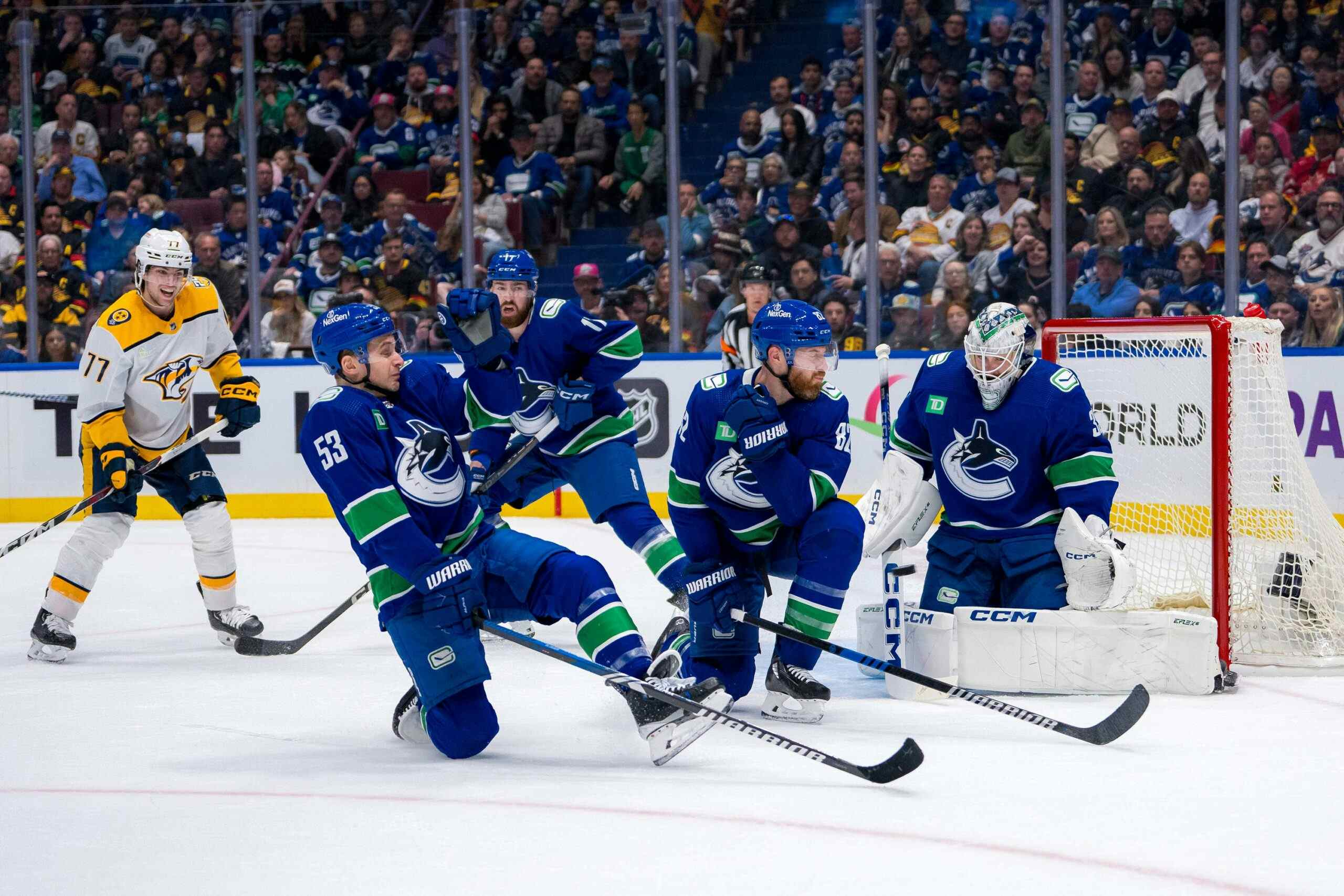Looking at the last time the Canucks were this bad, this young
By J.D. Burke
8 years ago
(Image sourced from www.WindsorStar.com)
Sometimes I think (the royal we included) take for granted how successful the Vancouver Canucks have been on this side of the millennium. They may not have a Stanley Cup to their credit, but I’ll be damned if they didn’t come as close as humanly possible.
Like most teams though the Canucks had to be bad to get good. Vancouver didn’t find the Sedin twins in the middle rounds of the draft. They had to hit rock bottom to get there. To that exact end, one might argue that the 1998-99 season was the best in Canucks history. Didn’t make it any less painful at the time, though.
That season was a deep breath before the plunge into a full-fledged rebuild. In a lot of ways, it mirrors the season the Canucks are currently suffering. They had a bevy of young talent making their debuts and an outdated core on their way to pasture – highlighted at the top by Mark Messier.
If this season has any context added to the one limping to an end as we speak, it’s the youth movement they undertook. Players like Ed Jovanovski, Matthias Ohlund and Matt Cooke were dipping their toes in the pool of NHL action and in some cases developing into full-time contributors. So too were several other neophytes, but their place in Canucks lore never really took hold like those three.
Some, like Bryan McCabe, took their talents to greener pastures by the time they’d developed into anything resembling a core piece. Others, like Josh Holden, Chris McAllister and Steve Washburn never amounted to much of anything, anywhere, and fanned out of the NHL before ever breaking the ranks of journeymen.
That’s the long form way of describing the challenges youngsters face in establishing themselves as NHL regulars. It’s just like the draft. More are going to fan out than make it, and even fewer of those that crack the NHL are going to develop into regular contributors at the high-end of their teams rosters. In that sense, the 98-99 season was a stepping stone for a relatively high amount of top of the lineup talent.
A similar argument can be made for the Canucks this season. Ben Hutton is leading the way, looking more the part of a top-four defender with each passing shift. Not far behind are Jared McCann and Jake Virtanen – first-round pedigrees in tow. There’s company on the peripheries, too.
Making apples to apples comparisons would prove difficult. There’s just so little information with which to make informed comparisons. Let’s see if there are any lessons or patterns in there, though, that we can apply to this season. Maybe there is a light at the end of the tunnel.

For the purpose of this exercise, the cut-off age is 23. Allotting for games lost to injury, it looks as though the Canucks had four, maybe five players stepping into full-time roles that season. That’s, more or less, where the Canucks have been this season. Where the modern Canucks outdo their 98-99 counterparts is the number of players making their NHL debut in that age group – seven rookies to the late-nineties four.

If we look exclusively at point shares, this year’s version of the Canucks outdo their predecessors by way of key contributors. Ohlund leads the way for both groups with 5.3 PS, but there’s not an awful lot happening around him. Hutton leads the U24 Canucks of this year with 2.7, but Sven Baertschi isn’t far behind with 2.3 PS of his own.
Nine of the fourteen U24 players for the 98-99 Canucks developed into bona fide NHL players. I would expect at least as many from the current Canucks roster to break that threshold. At least four or five of the 98-99 Canucks U24 players developed into core members of the team going forward, and again, I can’t imagine we’ll see any less from the current Canucks do the same.
There may not be a pair of Swedish super-twins at the end of the Canucks rainbow this season. But any of a pair of Finnish prospects expected to go in the second or third overall selection range might serve as near consolation. Jesse Puljujarvi and Patrik Laine may not be related, but if their performance at the World Junior Championships this winter is any indication, chemistry wouldn’t be an issue. Perhaps I’ve put the cart ahead of the horses, though.
I think I speak for most Canucks fans when I say any one of the two would be just dandy and fine. Assuming the draft lottery prevents as much, there’s every reason to believe that, based on the two rosters I’ve compared, the Canucks have a swath of NHL ready players on the cusp of developing into high-profile NHL’ers. Perhaps the future isn’t as bleak as it seems. That’s certainly the case if you use the 1998-99 Canucks as a benchmark.

Recent articles from J.D. Burke





